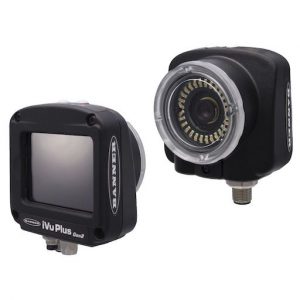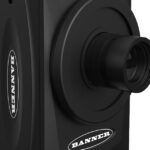Integrating Smart Vision Sensors into Existing Automation Systems – Starting the upcoming industrial transformation has resulted in a new generation of automation. Smart vision sensors in Machine vision technology are at the forefront of this industrial transformation. In this blog, We are going to discuss how can we are Integrating Smart Vision Sensors into Existing Automation Systems.
In Machine Vision, Smart Vision Sensors are one of the most essential parts of this advanced technology. Smart vision sensors are a perfect solution because of their management and execution strategy. We can combine the new smart vision sensors into any already existing automation functions. These advanced sensors fitted with Ultra-modern imaging abilities, are changing industries across the World like manufacturing, healthcare, automotive, transportation & logistics, and many more.
Brief About Smart Vision Sensors –
Smart Vision Sensors are pieces of ultra-modern imaging equipment that catch, process, and review images to operate real-time assignments and information. Here we mentioned some key features of Smart vision cameras.
Key Features of Smart Vision Camera:
- They are developed to be consolidated and accommodate the vision sensor, image processing, and I/O control in one place.
- Smart vision sensors can complete functions like object detection, review, measurement, and direction in real-time.
- They use onboard algorithms to develop images and provide appropriate information or conclusions.
- They can be combined into existing systems using different protocols like PROFINET, Modbus TCP, IO-Link, EtherNet/IP, etc.
- Some smart vision sensors can fix image contortions and assertiveness variations, even if they are climbed at an angle.
Integrating Smart Vision Sensors into Existing Automation Systems –
Smart vision sensors are changing industrial automation by providing ultra-modern vision features in a compact and cost-effective formation. Integrating these smart vision sensors into existing automation systems can significantly enhance efficiency, precision, productivity, and quality management.
Key Aspects for Integration Smart Vision Sensors in Current Automated System –
Here we mentioned some key aspects that we should consider during the integration of smart vision sensors in existing automation procedures:
Sensor –
We should choose a sensor with adequate resolution to catch the essential information for your use. Ensure the field of sensors covers the selected inspection zone. Also, view the lighting needs for optimal image grade. You can choose a sensor that is compatible with your current system’s communications like Ethernet, RS-232, and IO-Link.
System Integration –
First, we should physically mount the sensor and link it to the control procedure using proper cables and connectors. Then Configure the sensor’s parameters like image processing, thresholds, and judgment standards and combine the sensor’s output movements like digital I/O and analog signals with the PLC or controller.
Imaging –
These Sensors execute basic image processing methods like thresholding, filtering, and edge detection to remove relevant functions. Also, they used ultra-modern algorithms like pattern matching, object detection, and measure size to perform complicated reviews.
Communications-
Here we explain different types of communication protocols:
Ethernet – offers top-speed data transfer and helps different network protocols.
RS-232 – A simple serial communication for short-distance communication needs.
IO-Link: A standardized point-to-point transmission protocol for smart vision sensors.
Safety –
In the integration of smart vision sensors, we should stick to appropriate safety standards like CE, and UL to ensure safe procedures. We can execute cybersecurity measurements to shield the sensor and the entire automation system from cyber hazards.
Benefits of Integration Smart Vision Sensors:
Here we mentioned some key benefits of smart vision sensors in Industries –
- Smart vision sensors can be integrated in minutes with no requirements for coding.
- They can review different features at the same time and operate inspections.
- These sensors can review slight irregularities to enhance product quality and procedures.
- A single smart vision sensor can substitute numerous laser-based sensors.
- Smart vision sensors can help efficient tests without needing detailed imaging wisdom.
- Some smart vision sensors can be operated to stop cooperating robots.
Conclusion –
In conclusion, integrating smart vision sensors into existing automation systems can significantly enhance efficiency and quality in several industries. These sensors are very effortless to install and operate advanced imaging methods to improve inspection procedures. Businesses can increase productivity and ensure safer procedures by focusing on the right sensor selection and proper integration.
FAQS for Integrating Smart Vision Sensors into Existing Automation Systems –
Q.1 What are the industrial smart vision sensors?
Ans. Smart vision sensors are state-of-the-art imaging equipment that catches, functions, and researches images in real-time. These sensors have vision sensing, imaging, control abilities, measurements, inspections, and many others.
Q.2 What are the important considerations when choosing a smart vision sensor?
Ans. We should consider some aspects like resolution, lighting needs, compatibility with with current system, and more.
Q.3 What are the applications of smart vision sensors in Industries?
Ans. Smart vision sensors can be used in multiple industries like manufacturing units, healthcare, educational structures, automotive, logistics, and many others.
Q.4 How do smart vision sensors enhance industrial automation?
Ans. Smart vision sensors can improve industrial automation by offering ultra-modern vision abilities that guide enhanced efficiency, accuracy, and quality management.









 Call
Call Whatsapp
Whatsapp Contact Us
Contact Us